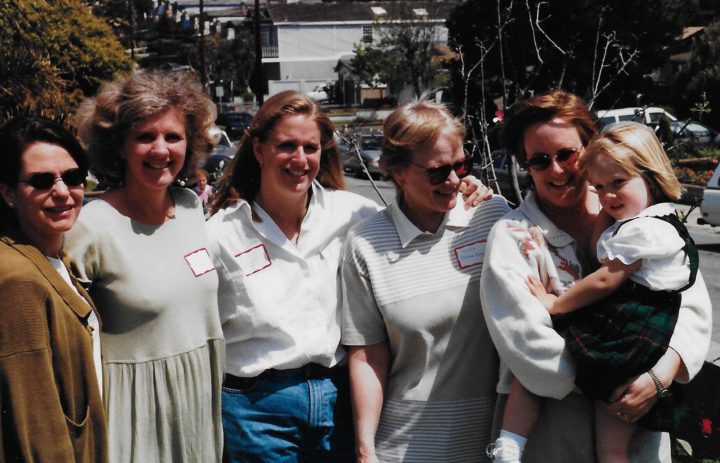Article begins
Archaeology Division’s 2018 Student Membership Award winner seeks to raise awareness about the need for more work on menstruation in the archaeological record.
I became interested in studying the archaeology of menstruation at the Egyptian site of Deir el-Medina. I was the last person in my friend group to get her period. I almost believed it wasn’t real, that everyone was lying to me about blood being expelled from the vagina every month. My friends congratulated, me saying “You’re finally a woman!” It felt as though I had joined a secret sect of society. My friends and I would use our membership in this community to repel intruders, so we could discuss our secrets away from their ears. We were manipulating the societal norms that vilify and secret menstruation away from the public for our own gain.

The women of my family, circa 2000. Anne Sherfield
A couple years into my cycle, I realized that I had no idea what women did to mitigate their periods prior to the invention of pads and ibuprofen. In school we were taught the biology of menstruation but not its history. I searched the internet and local libraries for books on the history of menstruation and found books like Flow: The Cultural Story of Menstruation. In these books, menstruation’s cultural history seemed to begin with the invention of female hysteria in the sixteenth century, but I knew that women were alive and bleeding before this time. I wanted to know how Roman women dealt with their period. Did they free flow like the working-class women of the industrial era or did they stuff cotton up their vagina every month?
These questions still preyed upon my mind when I entered college and had access to information that was previously hidden behind paywalls. I found a wide variety of papers on menstruation from across the world, discussing menstruation in cultures beyond western Europe and America. The majority of these papers did not discuss the nitty-gritty details of how people stanched their blood flow, but focused on cultural behaviors surrounding menstruation, specifically menstrual seclusion. It was inspiring to see how people have used their menstruation like my friends and I did in middle school: to create a space for ourselves wherein we can share stories and secrets. However, these ethnographic and textual accounts still did not provide the time depth I desired.
During my sophomore year or college, I asked a graduate student instructor if she knew of any papers that discussed menstruation in the ancient world. She knew of one: “Menstrual Synchrony and the “Place of Women” in Ancient Egypt (OIM 13512)” by Terry G. Wilfong. In this paper, Wilfong presents a translation and interpretation of ostracon OIM 13512 from the New Kingdom Egyptian site of Deir el-Medina. The ostracon details the movement of eight menstruating women to/from the place of women. Wilfong’s conclusion that menstrual seclusion occurred at Deir el-Medina has been debated in the years since this article’s publication, but the discourse has remained exclusively within the textual realm. This seems irrational to me since the size of the domestic structures at Deir el-Medina is often the reason for dismissing the possibility of menstrual seclusion at the site. I brought the archaeological evidence into the discussion by analyzing the architecture of the houses at Deir el-Medina as to their suitability for menstrual seclusion. I presented my findings on this investigation that I presented at the AAA Annual Meeting in San José.
I felt removed from the great women of history due to the elimination of menstruation from their stories.
Archaeologically, understanding cultural behaviors surrounding menstruation is important because it can provide glimpses into gender relations and gender roles that allow us to understand the social structuring of past societies. However, it is equally important that menstruation be studied in order to personify and connect to the people of the past. As a teenager, I felt removed from the great women of history due to the elimination of menstruation from their stories. This removal is discussed often in literary circles, but it also needs to be tackled in archaeology. Menstruation is a biological continuity that has always occurred to half of the human population and there needs to be a cultural history that is representative of this reality.
Anne Sherfield is a spring 2018 graduate from the University of Michigan and a winner of a 2018 Student Membership Award from the Archaeology Division.
Sandra L. López Varela is contributing editor for Archaeology Division.
Cite as: Sherfield, Anne. 2019.“Archaeology of Menstruation.” Anthropology News website, July 17, 2019. DOI: 10.1111/AN.1224

